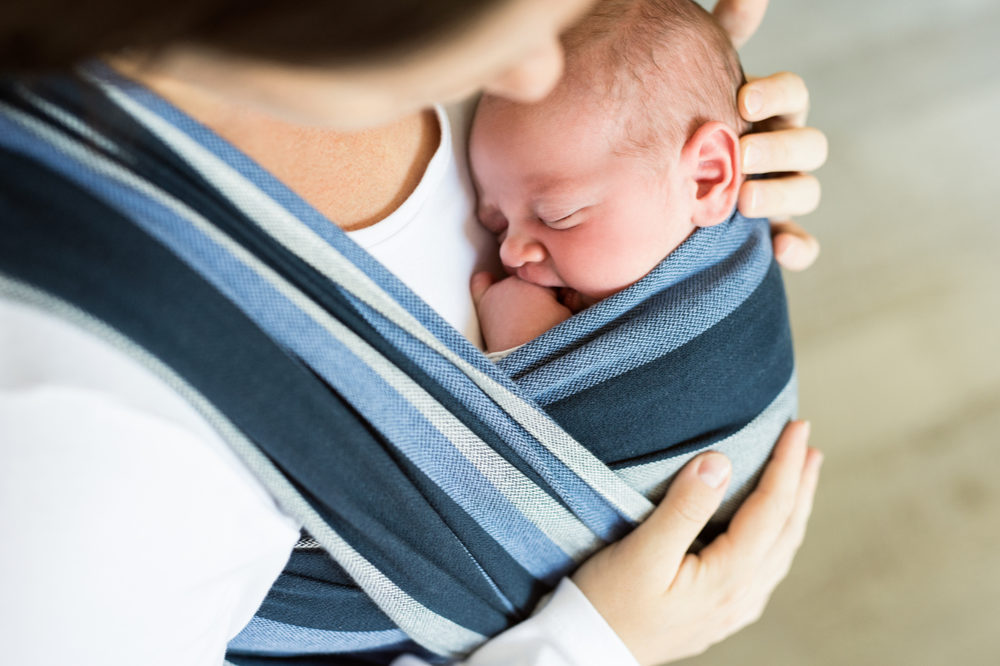New Infant Sling Carrier Standards Issued By CPSC

Federal safety officials announced new mandatory standards designed to improve infant sling carrier designs, in an effort to reduce the risk of serious injury or death.
The U.S. Consumer Product Safety Commission (CPSC) approved new mandatory standards on January 13, according to a press release. The rules come following a number of infant sling recalls and deaths associated with the use and design of the devices.
The newly approved rules were issued by the CPSC to amend the Standard Consumer Safety Specification for Sling Carriers, which was developed by the nonprofit standards organization ASTM International, requiring several design changes that would improve carry weight capabilities, structural design, fall prevention hazards and instructional materials, as well as affixed safety labels.

Did You Know?
Millions of Philips CPAP Machines Recalled
Philips DreamStation, CPAP and BiPAP machines sold in recent years may pose a risk of cancer, lung damage and other injuries.
Learn MoreInfant sling carriers are intended to hold infants and toddlers weighing between 8 and 35 pounds in an upright or reclined position. The slings are typically constructed in a hammock-shape design made of long lengths of material or fabric that wrap around the caregiver’s body.
Although the infant and toddler’s slings have become extremely popular over the past decade, dozens of injuries and at least 17 fatalities have been reported in connection with the products due to fall hazards and the way the fabric or material can keep children trapped in a curled position, potentially restricting the child’s airway.
The CPSC developed and approved the new rules after evaluating injury and fatality data between January 2003 and September 2016, which included 159 incidents reported to the agency involving problem with sling carriers.
Of the 159 reports, 17 involved fatal injuries and 67 of the reports involved an injury to the infant during the use of the products. Of the 67 injuries, 10 required some sort of emergency medical treatment.
The CPSC issued a warning on infant sling risks in 2010 after a number of injuries and deaths.
In addition to the new standards, the CPSC is warning parents and caregivers that the slings may pose a serious and sometimes fatal situation when used improperly. The agency warned that during a child’s first few months of life the babies cannot control their heads due to the lack of neck muscles, leaving them vulnerable when wrapped in a sling.
Reports have indicated that the slings fabric can hold the baby in a position that either bends their chin to their chest or wrap around their necks, restricting airways that could pose a fatal suffocation incident within just a minute or two.
The newly approved rules mandate that manufacturers ensure that the slings can carry up to three times the advertised maximum recommended weight and that the structural integrity of the slings be sound and not allow any separation at the seam or fabric. The requirements also mandate the designs of the slings incorporate an occupant retention to prevent fall hazards when children are being carried.
Also included in the new rules are mandatory warning labels and instructional literature that will include pictures to show the proper position of a child in a sling, a warning statement regarding potential suffocation risks, fall hazard prevention instructions, and a reminder for caregivers to check for ripped seams, buckles or fabric tears before use.
Several product liability lawsuits have been filed against manufacturers of the slings, claiming design defects led to deaths and that the companies often failed to recall the devices even after they knew there was a problem.
In 2011, a Philadelphia women reached an infant sling wrongful death settlement against Infantino for $8 million after alleging in a complaint that her son had suffocated against her body while in one of the manufacturer’s baby slings. The mother claimed she was unaware that her child had died until she noticed drops of blood on his bib. A medical examiner later pointed to the sling’s design as a likely cause of the child’s suffocation.
The baby sling lawsuit claimed that Infantino failed to issue a recall in a timely fashion, waiting until after a number of infant deaths had occurred before removing the product from the market. The complaint accused the company of knowing the slings were dangerous at the time she purchased them.
The CPSC is urging caregivers that the infant’s face should be uncovered and visible at all times, and if nursing a baby in a sling to change the position after feeding so the baby’s head is facing upward so they do not choke. Customers are also being urged to constantly check the material and fabric the slings are made of for tears and rips at the seams to prevent fall injuries.
Get more articles like this sent directly to your inbox.
"*" indicates required fields




0 Comments